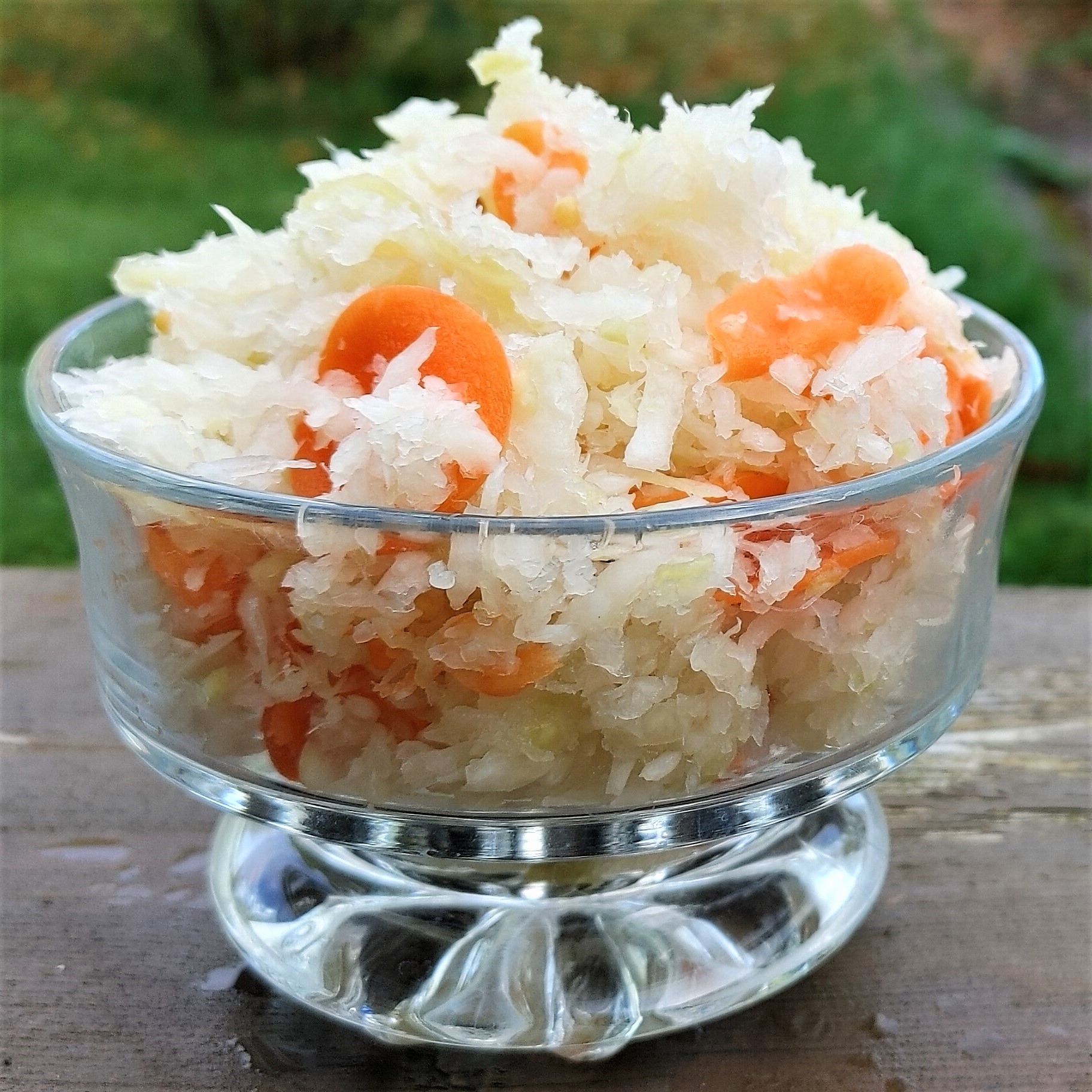


Homemade fermented foods play a vital role in nurturing a healthy microbiome.
Homemade fermented foods are better than factory-produced ones. (See why)
We've compiled a shortlist of the easiest fermented foods to DIY.
Without further ado, here are our top 5 easiest fermented foods to make at home:
1. Kefir
Topping our list is kefir, a nutritious cultured dairy drink. It's the easiest of all homemade fermented foods.
Kefir is a living food, abundant with live beneficial microorganisms. Read about its benefits.
While overall similar to yogurt, kefir is fizzier, tarter, yeastier, and more pourable.
How is it made?
By adding powdered starter to dairy milk and letting it culture for 24 hours at room temperature.
- Level of difficulty: super easy
- Cooking skills: none
- Special equipment: none
- Special care: none
2. Yogurt
Homemade yogurt is a wholesome food, rich in nutrients. You can easily make probiotic yogurt at home.
How is it made?
By adding yogurt starter to dairy milk and culturing it in a yogurt maker for around 8 hours.
- Level of difficulty: easy
- Cooking skills: heating up the milk
- Special equipment: yogurt maker
- Special care: none
3. Kefir Soda
Kefir Soda is a probiotic, refreshing, naturally effervescent drink.
While bearing some similarities to kombucha and water kefir, Kefir Soda is much simpler to make.
How is it made?
By adding powdered Kefir Soda Starter to fruit juice or coconut water and letting the mixture ferment for several days on the counter.
- Level of difficulty: easy
- Cooking skills: none
- Special equipment: sturdy flip-top brewing bottles that can take high pressure
- Special care: Gently burp the bottles often to let some pressure out
4. Sauerkraut
One of the most widely-known artisanal fermented foods, sauerkraut is a crunchy and flavorful traditional cabbage condiment.
During fermentation, lactic-acid bacteria ferment the sugars naturally present in the cabbage leaves, producing a pleasantly sour, crunchy dish.
Fermented vegetables are a great source of probiotic nutrition.
How is it made?
By shredding cabbage and submerging it under a brine. (A starter will help optimizing the process.)
- Level of difficulty: fairly easy
- Cooking skills: shredding
- Special equipment: food processor
- Special care: From time to time make sure the veggies are submerged under the brine
5. Kimchi
Originating in Korea, kimchi is similar to sauerkraut but is spicier and often includes additional vegetables such as ginger, garlic, carrots, onions, and hot peppers.
Fermented vegetables are a great source of probiotic nutrition.
If you've never made fermented vegetables before, you may want to start with sauerkraut, it's easier.
How is it made?
By shredding vegetables and submerging them under a brine. (A starter will help optimizing the process.)
- Level of difficulty: fairly easy
- Cooking skills: shredding
- Special equipment: food processor
- Special care: From time to time make sure the veggies are submerged under the brine
Enjoy your homemade fermented foods!

